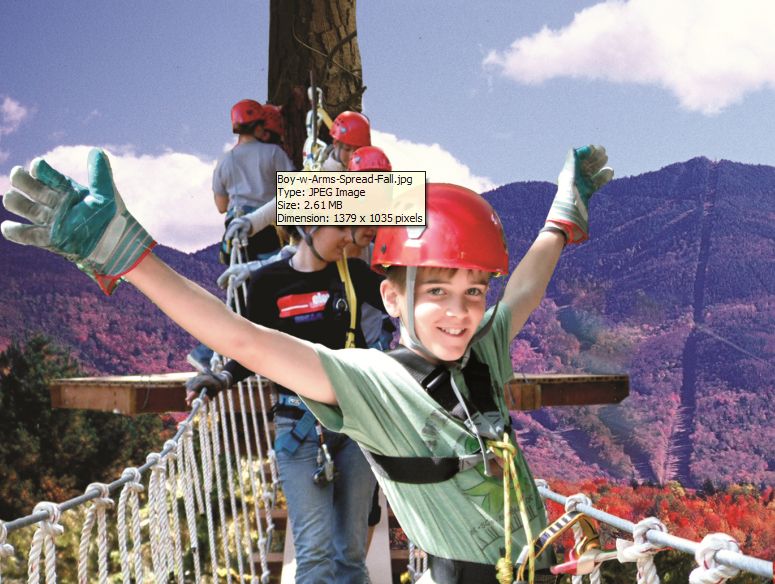Kids and grownups zipping through the treetops in Northern Vermont

By Eileen Ogintz
JEFFERSONVILLE, VT. (Day 3 of 4) — Lesson one: Learning how to brake!

—eight zip lines (the longest 1000 feet and the highest 75 feet above the ground), two rappels (40 feet!) and two bridges 35 feet high and one 150 feet long.
One of the younger kids in our group announced this was his third time. Gulp! The dozen in the group—including four kids are more than ready for the adventure.
Mike Smith, who is the managing partner of ArborTrek and has designed and built these courses around the world for years, says he sees growing numbers of families looking for an adventure they can share—including with grandparents. They’ve hosted seniors in their 90s, he said.
“We can see beautiful places on our phones,” he said. “We’re looking for photos tied to emotion, bonding experiences…our mission is to educate and inspire and help families connect with nature.”
To that end, the guides, Josh Conton and Alex Smith, offer a running commentary on the trees and the forest. Is this tree that anchors one of the first ziplines a Red Maple or a Sugar Maple (it’s a red). What is this evergreen that anchors one of the tallest ziplines – it’s a hemlock, the sturdiest tree in the forest and flexible enough to bend in the wind.
Some programs, Smith says, focus on “fastest and farther.” Others like this one, are more of a total experience.
Today, just in the United States and Canada there are as many as 1000 zip line and aerial adventure parks; A decade ago, there were just a dozen, said Smith, who is on the board of the Association for Challenge Course Technology.
Safety of course is a primary concern with the course inspected daily, guides highly trained and harnesses checked and double checked.
The group must attend a brief “ground school” to make sure they know how to break and then they are off!
Last year, ArborTrek added a three-part obstacle course—one part appropriate for kids as young as four (they need to be at least eight and 70 pounds to zip). Adjacent Smuggler’s Notch Resort sends kids from its adventure camps over to test their mettle on the Obstacle Courses.
“We want this to be a participatory adventure,” said Smith. “We want participants to learn a skill.” That’s why they must brake themselves, though the guides, of course can help. What you don’t want to do: Brake too soon!
“People come to experience something knew, get over a fear of heights, release stress…you can scream your brains out,” said Smith. “Kids may never have seen their parents scared before!”
Just as significant, it may be the first time—or the first time in a long time—that they’ve been in the woods. “For families, this is an escape from their day to day routine.
On the obstacle course, since kids are clipped in, they can climb a tree safely without parents worrying they are going to fall. The low obstacle course allows parents with young kids to share an adventure—a zip line a few feet off the ground along with other elements—bridges, nets, ladders.
Between the three courses there are 70 elements (think a cargo net traverse, log swings, an accordion bridge 28 feet up). Only half the people who attempt the toughest part of the course, he said.
Parts of this course present a real physical challenge, unlike the zip line where the challenge may be more mental than physical while gravity does the rest.
There are many different ways to do this course. “Deciding where to go and accepting the decision of that choice is part of the adventure,” Smith said.
And if you think this is all just for guys, think again. More than 60 per cent of customers here are women.
“A lot of time,” said Smith, “The kids are leading the way.”
